Content |
|---|
History
The German Hunting Terrier he is a high performance terrier. There are two varieties of it, the of wire hair and the of smooth hair. He is essentially a descendant of Fox Terrier. After World War I, some active hunters broke away from the Club de Fox Terrier to create a breed that would be oriented exclusively to hunting performance. This was successful and thus the German Hunting Terrier Club in 1926. Under the leadership of Dr. Herbert Lackner the new race, the German Hunting Terrier, was established systematically and finally very successfully.
After a separation from the brood of almost 100 years, you can certainly talk about a new breed today. It also, you can clearly see it in its appearance and also in the nature of this professional hunting dog. But, remained a terrier. One German Hunting Terrier you must be very brave, fearless and defensive. Must be able to work boar hunting without problems, which is one of the most difficult and dangerous tasks a hunting dog can master. Even today the German Hunting Terrier is still a highly prized hunting dog. Has become a versatile hunting assistant. Among other things, It is used very successfully in wild boar hunts., where it excels with amazing performances. His tireless work eagerness and leadership are especially appreciated while hunting..
The German Hunting Terrier he is fearless and with every fiber of his being he strives to do his job as well as possible. The German Hunting Terrier has been conceived as a breed from birth by hunters for hunters. Therefore, given exclusively to hunters. It is still successfully served today by the “German Jagdterrier Club” in the VDH (German Canine Federation). It is exclusively cared for by breeders affiliated with this club. The breed is highly valued and popular with German hunters.
Physical characteristics
The German Hunting Terrier it is a small to medium sized dog with a distinctive appearance. He is a high speed terrier. Has an awake expression, well trained and full of tension, which leaves no doubt that you are always ready for an adventure. This is underlined by its wedge-shaped but not pointy skull, his deep and determined eyes and his ears leaned forward.
The standard briefly describes it:
The German Hunting Terrier is a small, generally black and red, compact and shapely hunting utility dog.
The small dog has a height at the cross of 33 to 40 centimeters in both male and female dogs. But, bitches should be a little bit lighter. In males, the weight, is of some 9 to 10 kg, in females 7,5 to 8,5. In the standard it says briefly, according to the proportions, neither too light nor too heavy. The German Hunting Terrierhas always been available in two types of fur: smooth hair, dense, hard and rough or thick straight hair. Its color is black, dark brown or black-gray mottled with red-yellow spots, very well defined clean marks.
Character and skills
The German Hunting Terrier is a thoroughbred hunting dog for the practicing hunter. The Hunter Terrier it's a power pack. It's not for people who imagine a potato-trainer. It is by no means exclusively suitable as a companion or family dog.. His history and highly developed hunting skills should also be on the mind of the non-hunter, when you think about keeping German Hunting Terrier as a companion dog. Can be a charming companion and family dog fond of children, but only on the basis of its species-appropriate use as a hunting dog. Here he is shown as a First Class Hunting Helper, who convinces again and again for his performance.
The German Hunting Terrier it's hard and persistent, easy to handle and calm and especially for a Terrier quite compatible with other dogs. The official FCI standard describes its character in this way:
The German Hunting Terrier is brave and tough, eager to work and persevere, vital and energetic, reliable, sociable and manageable, neither shy nor aggressive.
The breed attaches great importance to suitability for hunting, firmness of character, hunting intelligence, fearlessness and low sensitivity. Must be a versatile dog, hard, noisy and water-loving with a pronounced hunting instinct and excellent training ability. Your determination, vitality, high intelligence and close relationship with his master and caretaker make him a very interesting companion, but also demanding.
Education German Hunting Terrier
This breed of dog can be very well educated and trained.. The clear announcement and the consequence are the miracle words here based on a respectful and loving relationship with the master or caretaker.. This terrier has been bred for many generations for its performance and good training ability. Only dogs that perform excellently here are used for breeding. For you, as your caregiver, this is both an opportunity and an obligation. With experience, consistency and a clear statement based on a trusting and emotionally positive bond, you can achieve everything with it.
German Hunting Terrier health and care
These German hunting terriers are extremely easy to care for. Brushing here and there is enough. His health is very robust.
Nutrition / Food
Feeding a German Hunter Terrier has no problems.
The life expectancy of the German Hunting Terrier
as a rule, the German Hunting Terrier enjoys a long and vital canine life, often over 12 years.
Buy German Hunting Terrier
If you are looking for a German Hunter Terrier, must contact a hunter, Ranger or breeder who is a member of the Club German Hunting Terrier long before I plan to buy one. Dogs are normally only given to hunters. Here and there it can happen that a dog looks for another place. But then you should be able and willing to give him species-appropriate living conditions.. A puppy of this breed of dog costs around 1.000 EUR.
Images "German Hunting Terrier"
Photos:
1 – Jagdterrier by No machine-readable author provided. Richard Huber assumed (based on copyright claims). / Public domain
2 – German Jagdterrier by Tux-Man / CC BY-SA
3 – Jagdterrier during dogs show in Katowice, Poland by Lilly M / CC BY-SA
4 – German Hunting Terrier during dogs show in Katowice, Poland by Pleple2000 / CC BY-SA
5 – Jagdterrier during dogs show in Katowice, Poland by Lilly M / CC BY-SA
6 – Jagdterrier by Pleple2000 / CC BY-SA
Videos "German Hunting Terrier"
Type and recognitions:
- FCI CLASSIFICATION: 103
- Group 3: Terriers
- Section 1: Large and medium sized Terriers. With proof of work..
Federations:
- – FCI – Terriers 1 Large and medium-sized terriers. ⓘ
- – UKC ⓘ
FCI breed standard "German Hunting Terrier"
Alternative names:
1. Deutscher Jagdterrier, German Jagdterrier, German Hunting Terrier, German Hunt Terrier, Jagdterrier (English).
2. Jagdterrier (French).
3. Jagdterrier (German).
4. Jagdterrier (Portuguese).
5. Terrier alemán de caza, Terrier alemán (español).
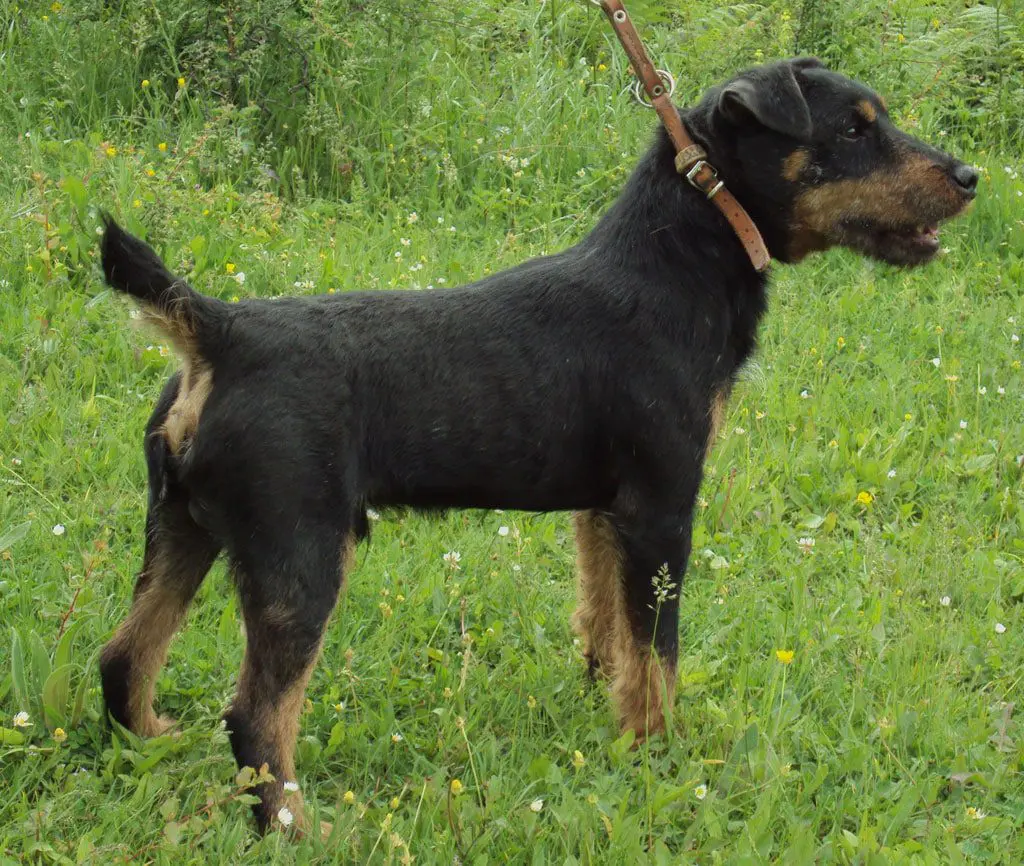
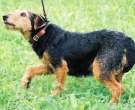
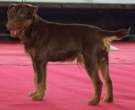

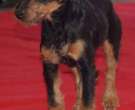
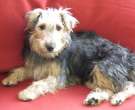
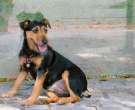
 German Jagdterrier Lutz vom Mückensteg – 02 – Obedience / submission training
German Jagdterrier Lutz vom Mückensteg – 02 – Obedience / submission training German hunting terrier puppy Gustl, 9.-13. week, Rescue Dog Training Debris
German hunting terrier puppy Gustl, 9.-13. week, Rescue Dog Training Debris german terrier (Hunting terrier) – Breed of dog
german terrier (Hunting terrier) – Breed of dog German Hunting Terrier (German hunting terrier)
German Hunting Terrier (German hunting terrier)
I would like information about purchasing puppies?
thank you.
Tiago